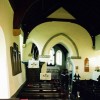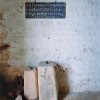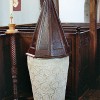The dates for this year’s Tolpuddle Martyrs Festival are the18th to 20th of July. There will be speeches, entertainment and marches, It is a useful and fascinating exercise to look into the personalities of some of the considerable number of people who were in an important way caught up in the drama of the Tolpuddle Martyrs.
Methodism, founded on an evangelical basis in the previous century, was in the early 19th. century becoming also a social force for the working class, and it meant everything to George Loveless, a man with a charismatic name and the foremost of the Martyrs. George had a strong character and was persecuted for his faith. He taught himself to read and write and was a lay preacher in the Weymouth circuit. There is no evidence that he mixed politics with his addresses in church, however.
One of a family of 10 surviving children, he was a few inches over five feet, with red whiskers and a strong chin. His wife was from Dewlish, a nearby village. He was 37 on his arrest.
James Loveless, his brother, was 25 and married with two children, Like George, he gave Methodist addresses. Thomas Standfield (44), was again a strong Methodist. James Brine, an Anglican, eventually married Elizabeth, the daughter of Thomas Standfield. John Standfield was, like Brine, only 21. James Hammett, born in 1811, was married three times and was not a Methodist.
It has been said the Celtic strain was visible in the physical characteristics of most of the men.
Fashionable Lord Melbourne, Home Secretary, was educated at Eton, Cambridge and Glasgow University. Earlier in life, he often ended his day at the gaming tables. He had a mentally deficient son. But what concerned him at the time of the Tolpuddle affair was the rise of trade unionism, despite the fact that the unions had been made legal. He had a family connection with Dorset, so was extraordinarily interested in the county.
The magistrate James Frampton, of Moreton House, not far from Tolpuddle, was a member of the upper class, believed in the monarchy, Great Britian, Church and Constitution. He had been to Paris and seen the Revolution at first hand. He was to be laid to rest in his home village at the age of 77.
Edward Legg, who gave evidence of a secret oath being administered, only did so under pressure. He apparently did not go to the meeting intending to become a spy.
So the six were sent out to New South Wales and Tasmania. George Loveless did not want his wife and family brought out, to the “distress and misery of this colony…” On his return to his cottage at Tolpuddle, and before leaving the district for good, he wrote the publication: “The Victims of Whiggery”. Tasmania and the separation from his family had done their worst, but his enthusiasm was undimmed. No doubt about it, here was a real union man, and it is difficult to over-emphasise his importance to the movement in general, and the significance of the annual memorial events at Tolpuddle.
But what of the judge? King William IV knighted Judge Baron Williams shortly after he had sent the Martyrs to the prison ships, and he was appointed to the King’s Bench. He died in 1846 aged 69, at his country seat in Suffolk.



